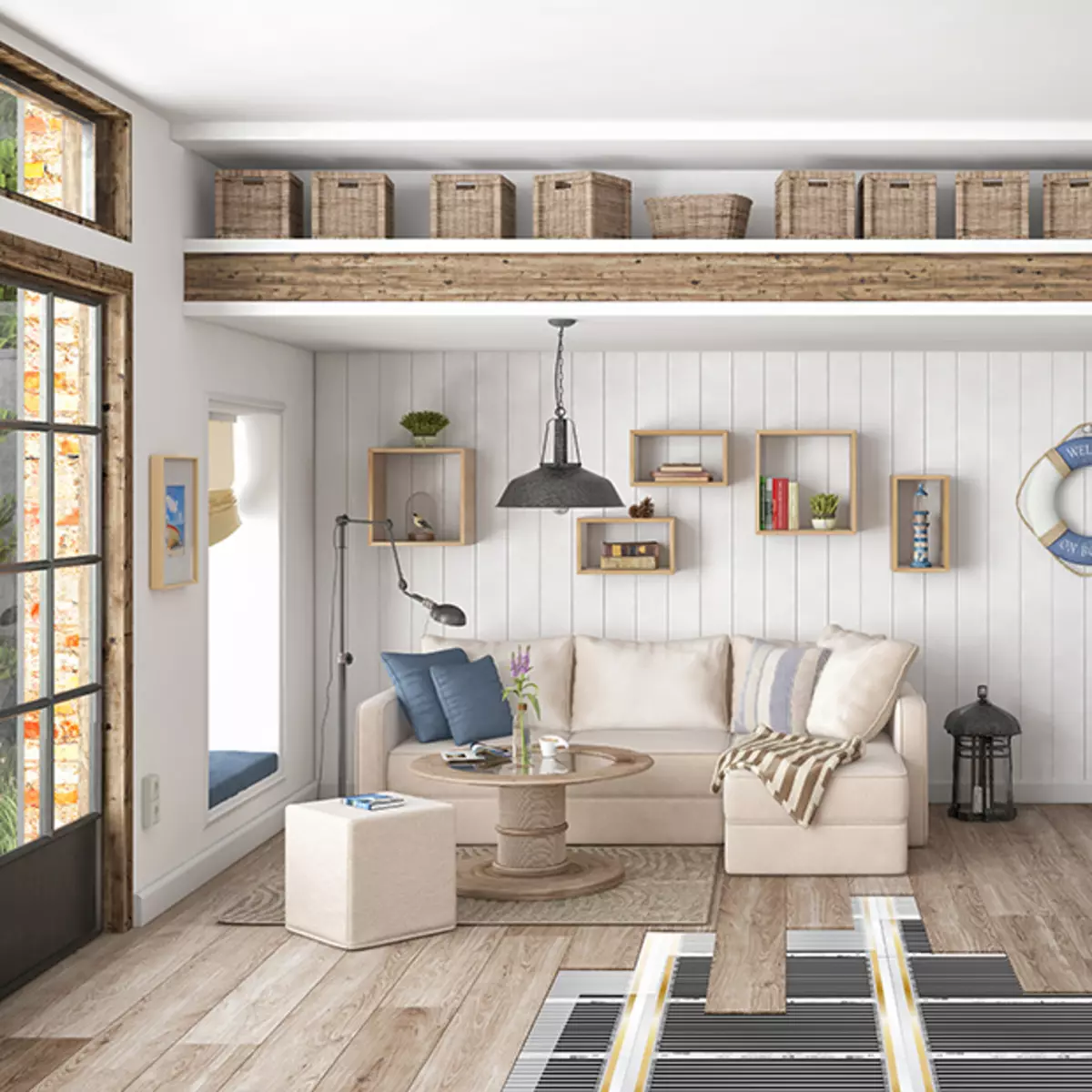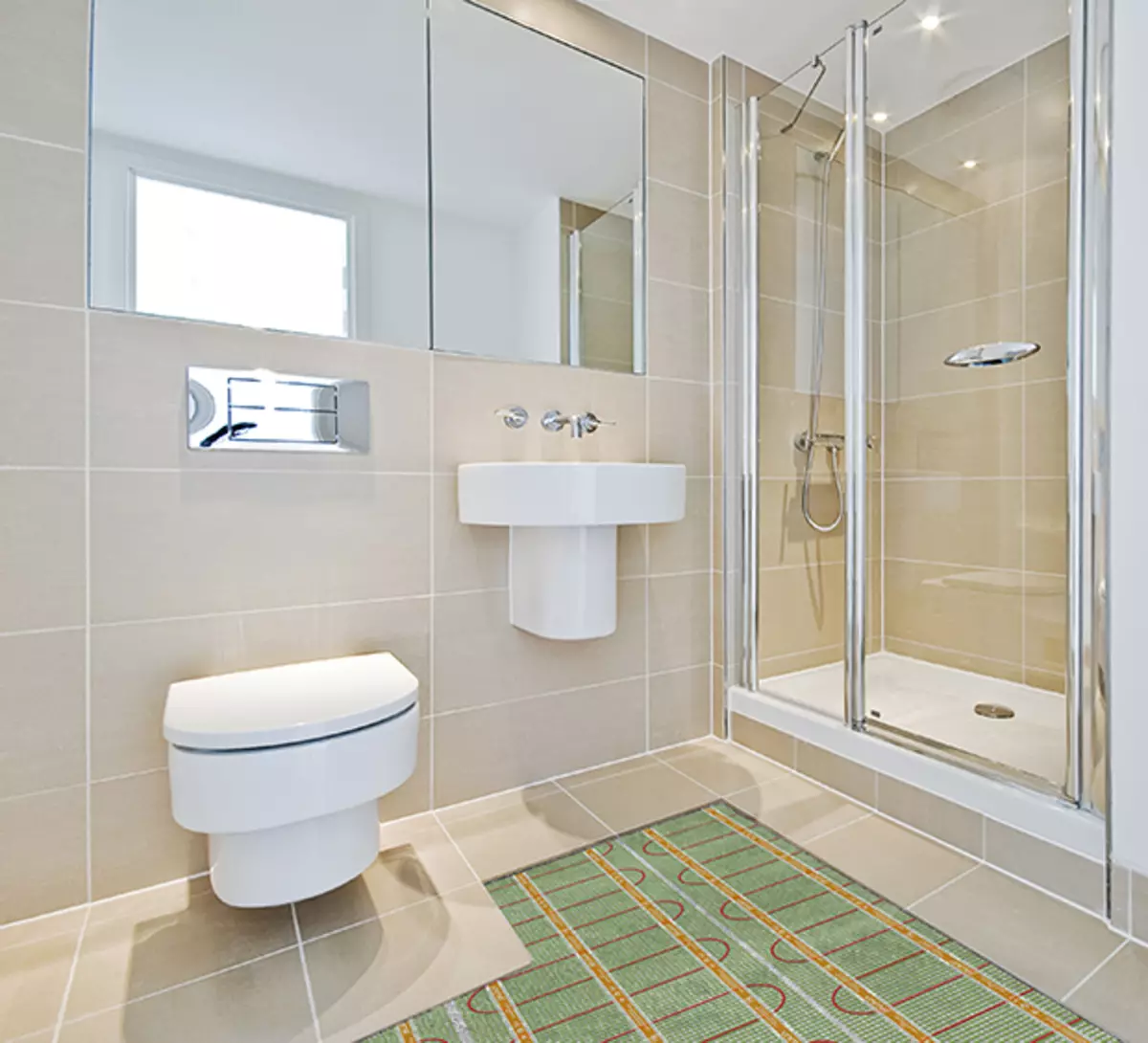Think about choosing a warm floor? And while afraid to make mistakes or irrationally spend your savings? We figured out what kind of floor heating system is better to choose from the example of the main types of structures!


Photo: Caleo.
Electric warm floors are becoming increasingly popular. The choice of models is very diverse. These systems can be installed both in private homes and in urban apartments, both in standard rooms and in cold, such as balconies and balconies. For their installation, it is not necessary to obtain permission from the administrative bodies of housing and public utilities. When using electric warm floors, there is no risk to pour neighbors and easier to control heating. They are environmentally friendly, and to mount such systems simply simply, besides, their service life is much longer than water. But there are so many of them! How to properly pick up a warm floor and not mistaken in the choice? We have collected all the most important and interesting information about warm floors, which will facilitate your choice.
Main types of electric warm floors
- Film
- Rod
- Cable
By way of installation:
- In the screed, tile glue. We are talking about cable and stem systems. Their installation is carried out in a layer of screed or tiled glue, which is possible only when conducting overhaul.
- Without a screed (immediately under flooring), not requiring mortar bond. This installation technology refers to heating film systems. The film warm floor is placed under the finishing floor covering, which is convenient for cosmetic repair.
Differences of convection and infrared heating principles
Consider the principle of operation of cable floors (for example, Caleo Supermat). It consists in the following - when the cable is heated, a gradual string of a screed occurs, from which the flooring is heated. Flooring begins to increase the air temperature. Then warm air rises up and, cooling, lowers back to the floor, after which this cycle is repeated. So, thanks to convection, the room is evenly warming up. With this form of heating, the human body and the objects in the room are heated again - precisely from warm air.In the case of infrared film floors (for example, Caleo Platinum), the thermople is mounted without a screed, immediately under the floor covering on any flat surface. You can not even dismantle the old floor covering. Infrared heat first heats out floor covering, man and interior elements. And then they hear the air. With this principle, heating does not have to spend energy to warm the screed and air, and the heating rate is much higher. The middle room warms up only in a few minutes. The temperature in such a room will be on average 4 ° C lower than with cable warm floor. And the most interesting thing - energy savings will be up to 60%.
Compatible with floor coverings
An ideal option for cable and core floors is a tile and porcelain stoneware. Laminate is also suitable, but not wooden flooring.

Photo: Caleo.
Fillenits are compatible with laminate, parquet board, carpet, linoleum, and a tree thick up to 2 cm. To label them is prohibited.
In addition, any warm floors under the heat insulating materials are impossible: based on the plug and with wool content. Also prohibit the use of warm floors manufacturers of piece parquet.
What else do you need to know
Film floors are distinguished by the exceptional speed and ease of installation. We are accustomed to the heating cables "Warm Paul" need to be immersed in a concrete tie. This is a time-consuming process that takes a lot of time, and waiting for a drying solution to introduce equipment to operate, accounts for a long time. Another nuance is often the screed has a different thickness all over the floor due to the height difference. For this reason, the heating of the floor occurs unevenly.So, when laying a film system for laminate, carpet, linoleum and any such coating screed is not required. It is only necessary to use the heat transfer material, on top of it - the thermal film, connect it to the network and put the finish coating. The heating season can be opened immediately after the end of work, which is a big plus for the owners.
Note that with the "dry" laying, the system practically does not affect the height of the floor, since the thickness of the heating film does not exceed 0.4 mm.
The advantages of each system
Now that we sorted out with the types of warm sex and installation features, we can highlight the main advantages of heating systems and determine what a warm floor to choose.
Pros of cable systems
- Mounting versatility (in the screed and tile glue).
- Suitable for complex configurations of the premises.
- High resistance to deformations and damage.
- We accumulate heat for a long time.
Pluses of a rod warm floor
- The ability to place any furniture.
- Economy cable floors up to 60%.
- Mounting versatility (in the screed and tile glue).
- Increased reliability thanks to the parallel connection of the rods.
Pluses of floor heating systems
- Speed and light of installation (installation for 2 hours on the usual room).
- You can turn on immediately after the installation is completed.
- Savings due to the principle of heating up to 20% compared with cable floors. A self-regulated film Caleo Platinum savings is up to 60%.
- The air is not dried, since the body of the person and interior items are heated.
If you plan to cosmetic repairs and intend to install laminate, carpet or linoleum, then not rationally spend money on the screed. Therefore, film floors will be the perfect choice. They do not eat the height of the floor, quickly mounted and immediately ready to operate!
If we decided to start the overhaul and want to put the tile, then the cable and rod systems mounted in the screed or tile glue will be a good option.
If you do not know in advance the placement of furniture, then the rod is preferable.
From the point of view of economy, we advise you to pay attention to film systems - no screed is required for installation, and electricity saving can be up to 60%. And for any warm floor, do not forget to purchase the thermostat!

